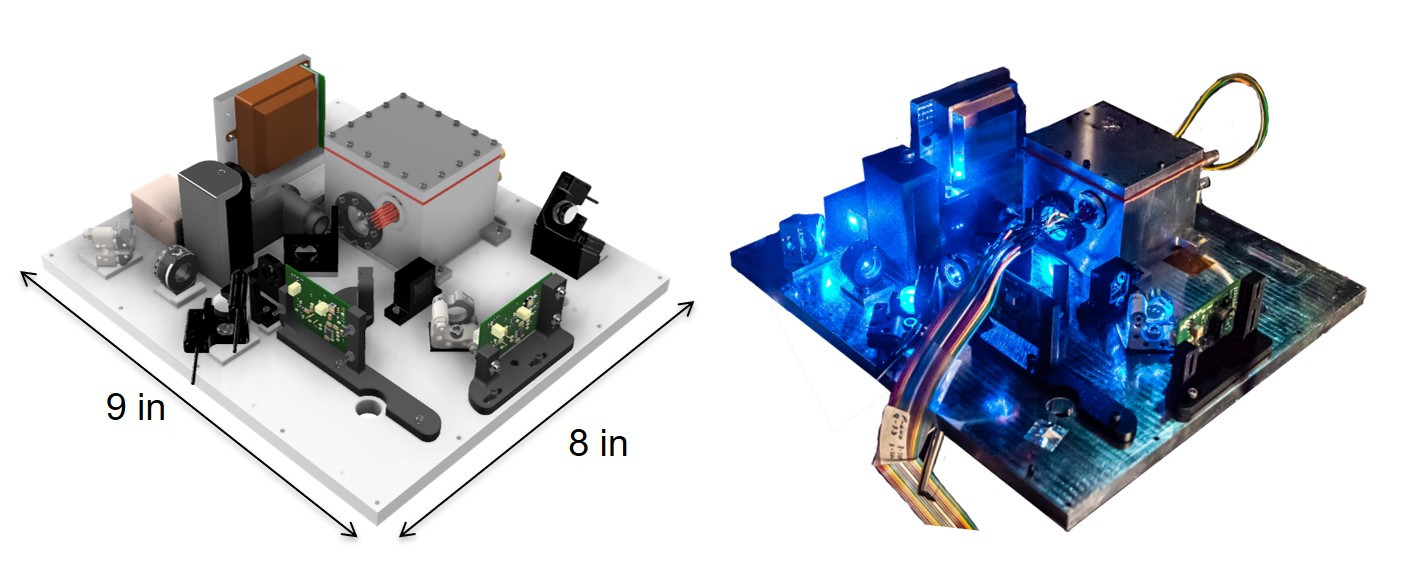Coherent deep ultraviolet (DUV) sources with a line width of 0.01 nm or less are of great interest for stand-off detection of explosives based on Resonance Raman Spectroscopy.
Dual Sense has partnered with the High Technology Foundation in developing a battery operable, compact continuous-wave ~7.5 mW laser at 236.5 nm.

Pulsed vs CW lasers
Currently a number of compact solid-state and fiber-based infrared Q-switched lasers are available in the near infrared wavelength region. Harmonics (typically 4th or 5th) of these lasers can be used to produce deep-UV wavelengths. Such lasers can easily output an average power of tens of milliwatts but have peak powers exceeding several megawatts due to their short pulse width of ~10 ns. A key disadvantage of such sources is the degradation of the explosive samples due to high peak power. Typical phenomena at high peak excitation power include thermal degradation, photolysis, dielectric breakdown of the sample, creation of transient excited-state species, Raman saturation phenomenon and possibly other phenomena from third order nonlinear optical susceptibilities of materials. While signatures from some of these phenomena can be taken advantage of in detection of explosive molecules in a controlled laboratory environment, in a standoff detection scenario with several complex interferents and less precisely known power level at the interrogation sample, interpretation of spectral and or transient spectral signatures is a complex task. Thermally induced damage, which is commonly noticed with several explosives because of their high DUV absorption, can obscure Raman and other signatures.
Dual Sense’s lasers are based on resonant second harmonic generation in an external cavity. This process is highly efficient, resulting in a very compact deep-UV source. Our CW deep-UV lasers result in negligible sample degradation compared to a high peak power pulsed laser sources.

